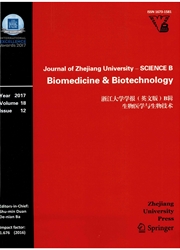

 中文摘要:
中文摘要:
雨正在导致的酸的逐渐地严重的问题从土壤增加了钾(K) 损失,并且在我们的地调查,我们发现那平反对关于属类亲戚 Mosla 种类表演不同忍耐到 K 缺乏。水耕法的研究在二 Mosla 种的生长上被进行并且他们的词法,生理并且 stoichiometric 特点响应有限(0.35 mmol K/L ) ,正常(3.25 mmol K/L ) 并且过多(6.50 mmol K/L ) K 集中。Mosla hangchowensis 是危及的植物,而 Mosla dianthera 一棵普遍杂草。在 M 的情况中。hangchowensis 与正常 K 集中比较, K 限制在网里导致了重要减小光合的率(P n ), 可溶的蛋白质内容,和超级氧化物 dismutase (草皮) 活动,而是 malondialdehyde (MDA ) 的增加集中。然而,叶团比率(LMR ) 和根团比率(RMR ) 几乎没被 K 限制改变。相反,为 M。dianthera, K 限制在 P n , 可溶的蛋白质内容,草皮活动,和 MDA 集中,而是增加的 LMR 和 RMR。N (氮) 的批评价值:K 和 K : 在射击的 P (磷) 比率显示在获得 K 的那限制为 M 发生在 K 有限的条件下面。hangchowensis 然而并非为 M。dianthera。我们在自然产地发现那低 K 满意是在 M 的生长和分发的一个限制因素。酸雨引起的 hangchowensis,和土壤 K 缺乏变得更坏 M 的状况。hangchowensis,当时 M。dianthera 能井交流气候到增加的 K 缺乏。我们建议控制酸雨和适用的 K 化肥可以是救危及的 M 的一个有效方法。hangchowensis。
 英文摘要:
英文摘要:
The increasingly serious problem of acid rain is leading to increased potassium (K) loss from soils, and in our field investigation, we found that even congenerically relative Mosla species show different tolerance to K-deficiency. A hydroponic study was conducted on the growth of two Mosla species and their morphological, physiological and stoichiometric traits in response to limited (0.35 mmol K/L), normal (3.25 mmol K/L) and excessive (6.50 mmol K/L) K concentrations. Mosla hangchowensis is an endangered plant, whereas Mosla dianthera a widespread weed. In the case of M. hangchowensis, in comparison with normal K concentration, K-limitation induced a significant reduction in net photosynthetic rate (Pn), soluble protein content, and superoxide dismutase (SOD) actix, ity, but an increase in malondialdehyde (MDA) concentration. However, leaf mass ratio (LMR) and root mass ratio (RMR) were changed little by K-limitation. In contrast, for M. dianthera, K-limitation had little effect on Pn, soluble protein content, SOD activity, and MDA concentration, but increased LMR and RMR. Critical values of N (nitrogen):K and K:P (phosphorus) ratios in the shoots indicated that limitation in acquiring K occurred under K-limited conditions for M. hangchowensis but not for M. dianthera. We found that low K content in natural habitats was a restrictive factor in the growth and distribution of M.. hangchowensis, and soil K-deficiency caused by acid rain worsened the situation of M. hangchowensis, while M. dianthera could well acclimate to the increasing K-deficiency. We suggest that controlling the acid rain and applying K fertilizers may be an effective way to rescue the endangered M. hangchowensis.
 同期刊论文项目
同期刊论文项目
 同项目期刊论文
同项目期刊论文
 期刊信息
期刊信息
